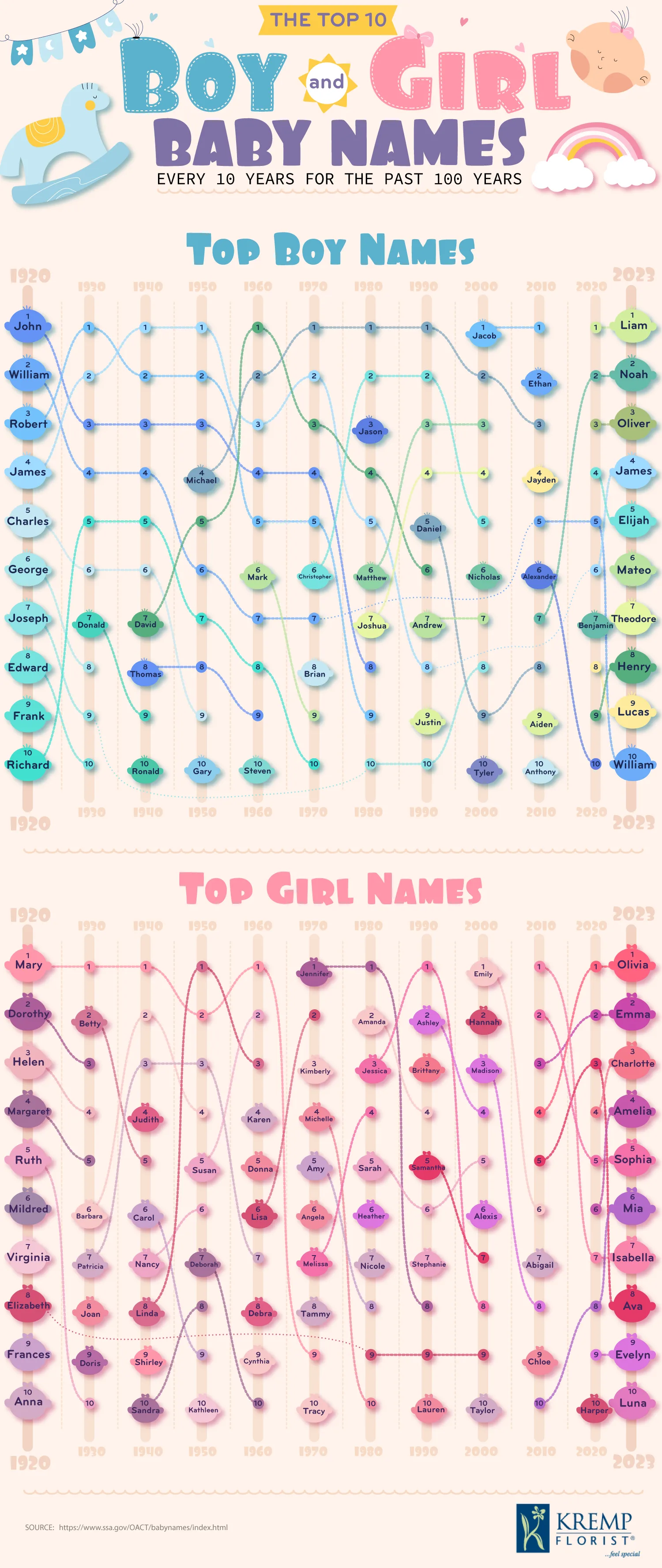Timelines
The Evolution of Baby Names: A Century of Trends
Even though approximately 10,000 babies are born each day, the act of naming holds significance. Some parents want a unique name for their child, while others want to follow tradition. Names serve as a window into the cultural zeitgeist, reflecting societal values, historical events, and pop culture influences of their time.
This chart from Kremp shows us that over the past century, we’ve witnessed a fascinating metamorphosis in naming preferences. In the 1920s, traditional monikers like John, William, and Mary dominated the charts, often inspired by religious figures or historical figures. Fast forward to 2023, and we see a shift towards more diverse options such as Liam, Noah, Olivia, and Emma.
Click below to zoom
This evolution could reflect broader societal changes. The decline of once-ubiquitous names like John and Mary might indicate a move away from strict religious influences while the rise of names like Mateo and Luna suggests an increasing embrace of multiculturalism.
Interestingly, some names have displayed remarkable staying power. James, for instance, has maintained its popularity across generations, briefly falling out of favor only to resurge in recent years.
The world of girl names has seen even more dramatic shifts. The top names of 2023 are notably different to those of a century ago. As we examine the trends Kremp showed us on their colorful and fun chart, remember that names show us what parents valued when gifting their child with their name. Whether drawing inspiration from beloved fictional characters, honoring family traditions, or simply choosing a name that resonates, naming continues to be a deeply personal and meaningful act.
